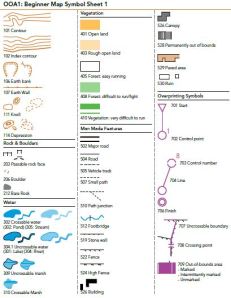The structure of the courses that are hidden around on my website look similar for a reason – that is what was prescribed by NCTC/Coaching Ireland as part of the Coach Development Programme. Lots of people give out about them, not enough coaching too, much coaching, too arduous to complete. Are they correct? Possibly but I know I bought into it because I can see, still see the benefit of all of the NGB’s having similar content across all of the levels, and linked to the even wider European project of harmonising coaching education across the content.
What I like about it is the sharing of the material that works across different sports – coaching is coaching at the end of the day, just how we implement it and what elements are important for the individual sports. In some places some NeuroMyths, or NeuroBollix if you want to be stronger, have crept into some sports, not sure if it due to naivety of coaches without any scientific background or rigour, or people selling solutions to make a quick buck. I won’t speculate as that will be a rabbit hole for later, maybe. Anyway, I think its a fight that will not be going away, some people are very good at selling products & techniques and make it sound sexy. Once we can stick to what the evidence suggests, rather than what’s shiny and new, the business of coaching may improve, suppose that is the whole point ISC/Sport Ireland are funding all of the NGB’s to do just that. Pity the ISC/Sport Ireland don’t do that themselves.
What I and plenty of others have noticed is the takeover of NGB’s staff training by the HR types in Sport Ireland, and worse delivering compulsory Whoo and the type of NeuroBollix that should be kept out of sport – and business. It would be great if Coaching Ireland take back that type of training, because we do not need that type of rubbish creeping in. Some of the HR mumbo Jumbo being promoted is really concerning. Worse is the doubling down on their decision to keep this nonsense in the staff development, but the vindictive elements creeping in, where if they are called out, there are consequences for those staff, which is a disgrace. I don’t know if it is arrogance, vindictivness or ignorance or just not like being called out on it and being defensive, but if a course is being made compulsory to attend, it should be based in evidence. If that happens that would be great for all moving forward.
Back to the great stuff that Sport Ireland are doing to support the sports in the background, the coaching & instructor course development. Having done work with two different NGB’s I know if the work they put into get the NGB’s over the line and offer decent coaching courses. An example would be the Adventure sports framework, which involved the main adventure sports NGB’s – Orienteering, Mountaineering, Sailing, Diving, Caving, Cycling (MTB), Surfing, where the need for Instructors in each sports was recognised from the adventure/outdoor industry, so that people can be insured and work safely & competently. We came together because so many people working in all or just some of the sports in adventure centres wanted a core of skills and competencies that would allow recognition of prior learning and speed up the certification and accreditation for each sport involved, and those sports that were still outside of the working group to adopt. Irish Snow sports have produced some really good resources for their coaches/instructors that are working on the slopes across Europe. They have used the European coaching competencies, hopefully they have engaged with Coaching Ireland as we need some of the winter sports to grow and prosper. While it took a while, I produced two different instructor courses, which I am very proud of doing, even if the work is actively diminished by successors. No matter.
I intend to complete the third level of course, The Senior Instructor, along with two specialist instructors courses – MTB & Navigation Instructors courses.Even if they do not get used, I want to complete my vision of what our sport requires to thrive and grown in the adventure sport businesses, trying to survive in a tough market place. Teaching people to read a map for walkers, runners, Orienteers, Mountaineers and Mountain Bikers is still vital skills, for safety reasons alone! Getting lost with clients is more than just embarrassing, it could cost them their life.
Some of the other NGB’s have been slow to get there courses moving forward, but hopefully that they can get there over time, especially with more resources/staff being put into all of the sports. The big step will be dealing with the industry and academic local academic partners, that want to deliver these courses outside of the NGB’s structures. This linking of the courses with University/College credits, so that they can be used towards professional & academic courses is essential. possibly what’s needed is one or two people to work across all of the NGB’s in the ASF, to make sure the implementation is uniform. That way we win and the industry wins with better staff standards. It is happening, but it’s slow. Its something that I started working with the ETB’s to have the Instructor courses recognised, but I stopped as they wanted a lot of work done by us to get them ready, but were not willing to pay for the use of those courses. Until the time they stump up for those resources, nothing will progress. To say it was frustrating, is well possibly another post.
Over the next posts I am going to go into detail about what I designed and what I would do differently now, having some brilliant instructors to watch and see in action, MIA’s, MCI, Kayak & Canoists, MTB’ers and expeditionary experts. I will add some of the Coaching Ireland resources as well, as they do not exist on their new website, which is a shame.

